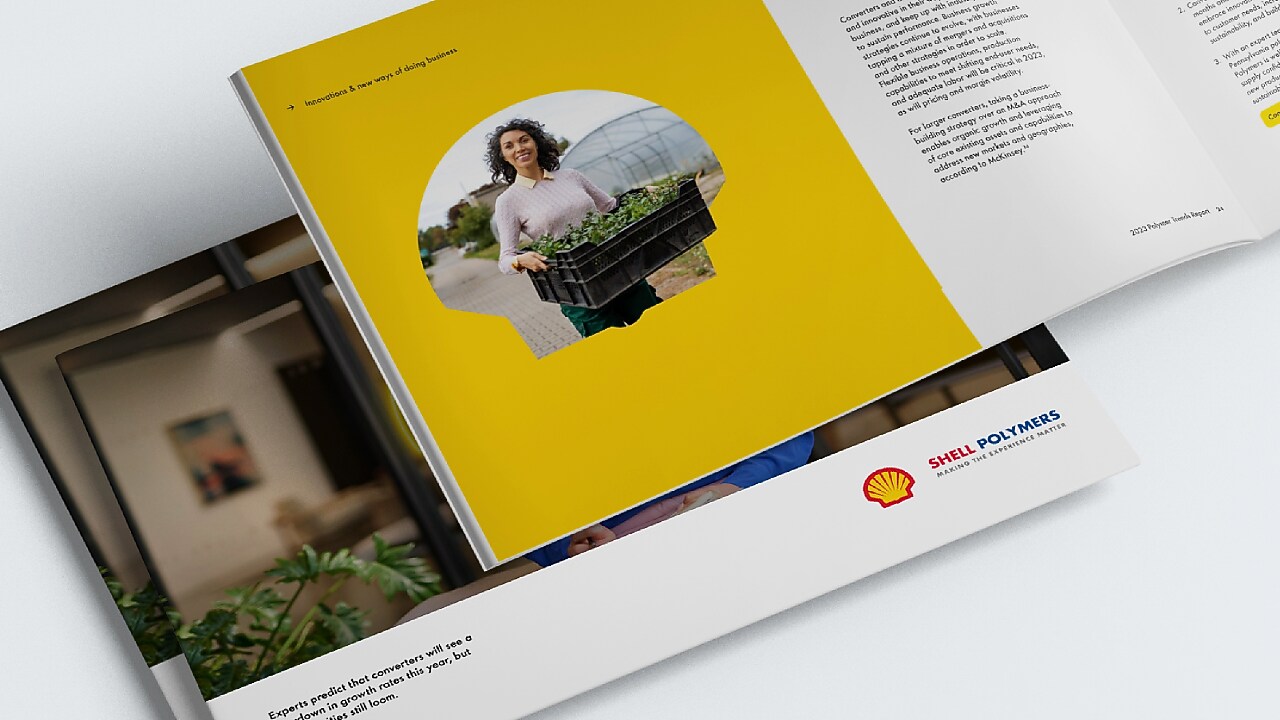
Ensure a Trouble-Free Blown Film Extrusion Machine Shutdown
Learn about tried-and-tested procedures that help blown film operators maximize their blown film machines’ utilization.

The actions taken during start-up and shutdown can have a major impact on a blown film operator’s productivity and margins. As important as a proper shutdown procedure is, it’s equally important to know why these procedures matter.
Learn more about the Advantages of Leveraging HDPE Film for Consumer Packaging Applications
The Cost of an Improper Shutdown
Linear low-density polyethylene (LLDPE Resin) and metallocene linear low-density polyethylene (mLLDPE) are used in the blown film industry due to their enhanced physical properties. These resins are stabilized with antioxidants to prevent degradation under normal operating conditions. However, they will degrade if they are subjected to low output rates or long residence times caused by improper shutdowns.
The idling or shutting down of a blown PE film line with polymeric resins in the extrusion system will result in a longer start-up with poor film quality and excessive scrap mainly due to gels. In some cases, the extrusion system, and specifically the die, will become unusable. This will lead to disassembly and cleaning, resulting in costly downtime and the disposal of scrap film which could push back upcoming order fulfillment. All of which directly affects profitability.
Purging Metallocene and Linear Low-Density Polyethylene Resins
The objective for a purge of these resins from a blown film extrusion system is to use a resin of sufficient viscosity to remove resins that are less thermally stable at lower output rates. That resin will provide the necessary back-pressure for the system to properly clean out of the resin currently being used in your system. LDPE resins are recommended because they are more thermally stable and not prone to the same degradation mechanisms (gels/crosslinking) that LLDPE and mLLDPE resins are. LDPE can safely be run at lower temperatures than other resins. This supplies the line with a polymer of sufficient robustness to remove most contaminants while enabling the bubble to be maintained.
Keeping the bubble up while using a lower temperature assures a sufficient flow through the die to effectively cool the internal components prior to shutdown. LDPE resins (especially when stabilized with additional thermal stabilizers) are preferred when the system is to be idled for long periods of time or when shutting it down.
Stabilized LDPE resins resist crosslinking and gel formation, which makes the line much cleaner on start-up. Lower shutdown temperatures also result in less oxygen being introduced into the extrusion system and ensure the internal wetted areas of the die will likely have less carbonization deposited on them.
Steps for a Smooth Shutdown
- LLDPEs degrade easily when left in a hot extruder. LDPEs are more thermally stable and don’t have the same degradation mechanism. LDPE is the preferred resin for shut down. Run the purge resin (0.7 to 1.0 MI LDPE) through the extruders until the previous resin is purged from the system (typically 15–20 minutes).
- Lower the temperature profiles on the extruder, connecting pipe(s) and die to 300°F (150°C) while maintaining a moderate output rate. Monitor the pressure to avoid over-pressurizing the extruder.
- When the melt temperature is below 325°F (163°C), introduce a shutdown resin (2.0 MI LDPE containing antioxidant concentrate) into the extruder. Use only enough to fill the extruder and die channels (typically 50 to 100 pounds).
- Once the shutdown resin has been completely introduced to the system, shut down the extrusion line and turn off all heaters.
Benefits of a Proper Shutdown
By accurately controlling the shutdown process, plastics converters can prevent polymers from degrading inside the system. Any degradation can have an impact on economics as the machines will be unavailable to move into production until the resin is purged.
Proper cooling prevents the polymer from degrading and oxidizing inside the die. By following the four steps above, polyethylene film machine operators can ensure a smooth shutdown takes place each and every time. This reduces the risk of resin degrading in the machine and prevents blown film operators from wasting time and material on lengthy start-up processes that could have been avoided.

Capitalize on market trends
Converters are predicted to see a slowdown in growth this year, but opportunities loom. Here's what you need to know.